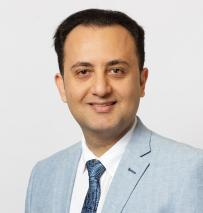Toward Comprehensive Flood Risk Management in Australia
By Roozbeh H-Nafari

The Hydrology and Water Resources Symposium 2023 (HWRS 2023), November 13-15, brings together water resource practitioners in Australia to discuss the complexities related to the occurrence of more frequent extreme weather events as climate change intensifies.
Lucy Goss, Jacobs water resources engineer and hydrologist, will be presenting a paper, “When zero does not equal zero: the need to transition from flood hazard management to a comprehensive flood risk mitigation approach”, that she and I co-authored along with Jacobs Senior Water Resources Engineer Benjamin Robertson.
One of the costliest natural disasters we face in Australia is flooding. With rising sea levels and rainfall becoming more intense, the magnitude of rare flood events, as well as the financial consequences of flood disasters, are expected to grow. This makes finding effective ways to resiliently mitigate flood risks more critical than ever. Currently, Australian urban development relies heavily on structural hazard mitigation measures like levees and drainage infrastructure to manage natural hazards. However, these measures aren't foolproof and combatting a hazard that never presents itself in the same way twice can catch communities off guard if a hazard presents itself unexpectedly.
Although necessary and effective in the short term, structural measures are just one piece of the puzzle. Considering the uncertainty of the future intensity, complexity, or frequency of natural mega-disasters, adopting a more comprehensive approach to risk mitigation is essential.
Therefore, we must adopt a more comprehensive approach that incorporates economic, social and managerial adjustments, being both cost-effective and promoting sustainable and robust development. For instance, we can invest in community education, land-use planning, insurance and public drills to enhance community preparedness for natural disasters.
While some non-structural measures are already in place to address flood risk in Australia, like Early Warning Systems (EWS) and education campaigns, we can still do more. For example, we can invest in IT and artificial intelligence applications that produce risk alerts and manage big, real-time data. With better systems in place, we can improve the reliability of forecasts, create a real-time system for risk management, promote collaboration between disaster management agencies and communicate information with the public to enhance response efficiency. Furthermore, it’s imperative to educate communities about the current limitations of EWS and the evolving dynamics of floods caused by climate change. It's important not to assume safety based on past experiences.
To improve our flood risk resilience and reduce social vulnerability to various threats, it's crucial to prioritize community education, awareness and preparedness. We can also invest further in proactive land use planning based on climate change adaptation policy and legislation to minimize exposure to future flood risks. By embracing these non-structural measures, we can pave the path to a more resilient future and promote sustainable development in response to the challenges posed by climate change.
In summary, a holistic disaster mitigation program that looks at vulnerability mitigation, land use planning, preparedness training and investment in technology will be essential if we are to mitigate the impact of natural disasters and mega-disasters on our communities in the future. Let's work together to improve our capacity for adaptation in Australia and address the growing challenges posed by increasingly severe natural disasters.
About the author

Roozbeh H-Nafari is a principal hydrologist and flood modeler at Jacobs and a Fellow of Engineers Australia with expertise in diverse industries, including flood risk management, sustainable development, and "Climate Change & Resilience" research programs. He has held prominent leadership roles for several large-scale transport infrastructure projects in the industry. He has managed and delivered multidisciplinary engineering works and major infrastructure projects from tender proposals to final completion in Australia and overseas. Roozbeh's doctoral research on "Flood Damage Assessment in Urban Areas" at the University of Melbourne resulted in a method for flood risk mitigation in Australia, which greatly contributed to the science and practice of engineering. This method provided input data for subsequent flood damage reduction and vulnerability mitigation while prioritizing flood risk mitigation projects, cost-benefit analysis and land use planning.












































